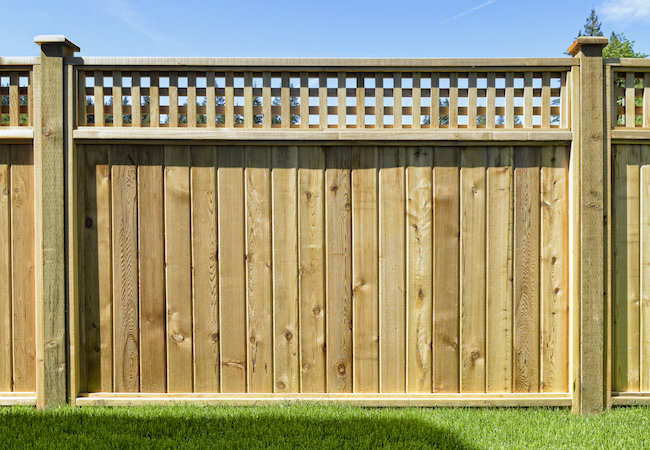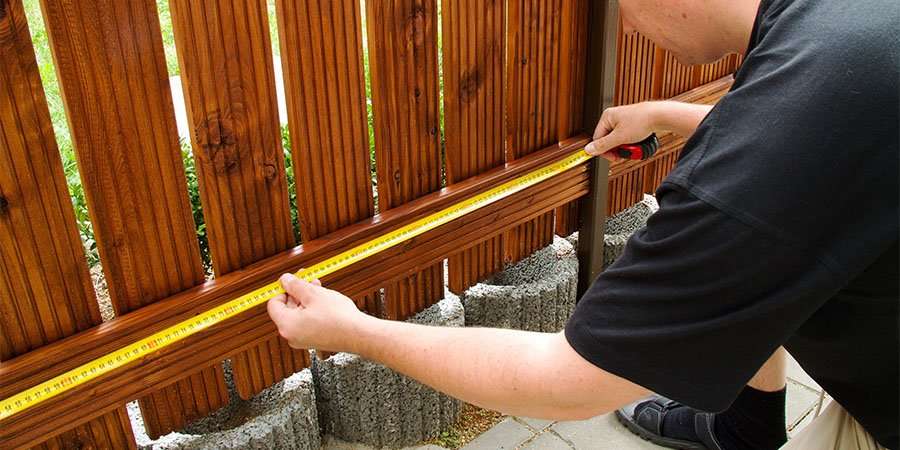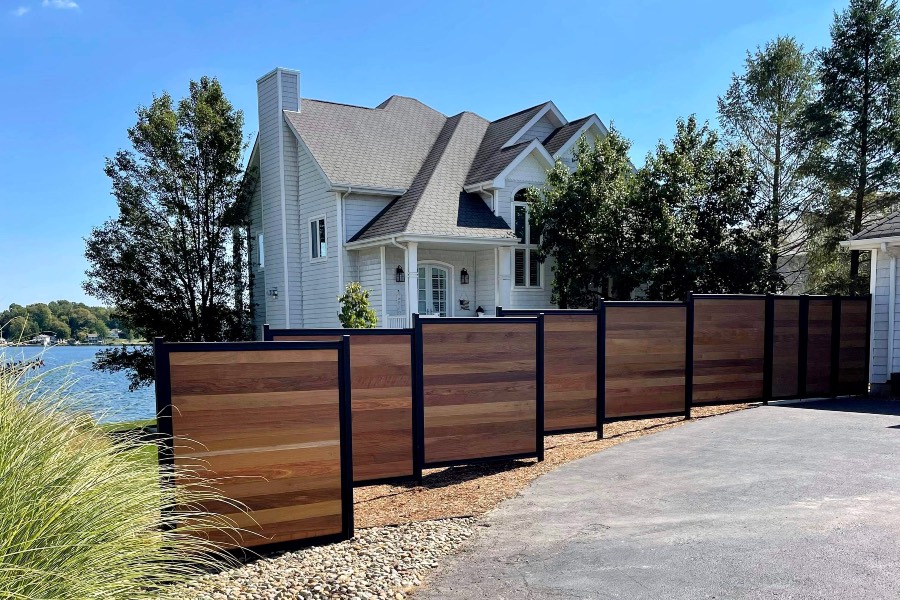Featured
From heavy rainfall and snow to extreme sun and wind, weather-related damages is one of the most usual causes of fence damage. While you can not manage the climate, there are several ways to shield your fencing from the damaging impacts of climate and ensure it lasts for years to come.
Wooden Fences: While wood fences are a classic selection, they are very vulnerable to moisture and pests. To make a timber fence extra resilient, choose pressure-treated lumber, cedar, or redwood. These products are extra resistant to rot and pests. You'll still require to secure the timber from the elements with normal upkeep.
Plastic Fences: Plastic fences are very sturdy and need little maintenance. They are resistant to fading, cracking, and bending, making them suitable for regions that experience severe sun, rain, or winter. Vinyl also will not rot or attract bugs, providing long-lasting defense without the requirement for constant upkeep.
Steel Fences: Wrought iron and aluminum fences are excellent selections for their toughness and resistance to wind and dampness. However, they are susceptible to rusting over time, specifically if exposed to constant rainfall or moisture. Choose for galvanized or powder-coated metal fences to lessen the threat of corrosion.
![]()
Compound Fences: Integrating timber fibers and plastic, composite fencings are immune to rotting, fading, and pest damage. They provide the look of timber with less maintenance, making them an optimal choice for locations with variable weather condition problems.
![]()
Wooden Fencings: An excellent high quality timber sealant or stain is vital to secure your fence from the aspects. Be certain to reapply the finishing every pair of years to maintain your fence in leading problem.
Plastic Fences: While plastic is low-maintenance, you can still protect it additionally by using a UV protectant. These finishings help protect against staining triggered by prolonged sun exposure. In addition, make use of vinyl-specific cleansers to keep the surface devoid of spots or dust buildup.
Steel Fences: To secure metal fencings from corrosion and corrosion, take into consideration applying a rust-inhibiting guide adhered to by a protective paint made for outdoor usage. Powder coating offers a resilient and resilient coating that can endure harsh weather condition. if feasible.
Wooden Fencings: Tidy your wood fencing with a stress washing machine or a soft towel and moderate detergent. Be sure to eliminate fallen leaves, mold, and dust that can hold wetness versus the wood. Examine the fencing consistently for indications of rot, splits, or insect problems. Early discovery can avoid tiny issues from transforming into expensive repair work.
Vinyl Fences: Plastic fencings are easy to clean with soap and water. For tougher discolorations, you can utilize a moderate bleach remedy or a vinyl cleaner to bring back the fencing's look. Don't forget to evaluate for any kind of cracks that may allow water in, causing additional damage.
Metal Fencings: Tidy steel fencings with a soft towel to eliminate dust, corrosion, and dirt. If you discover rust spots, eliminate them immediately with a cord brush and treat the location with a rust-resistant guide or paint to prevent it from spreading out.
Wooden Fencings: When mounting wood fence posts, make certain they are set deeply into the ground, ideally listed below the frost line to stop changing during freezing temperatures. Use concrete to protect the blog posts and avoid them from being or leaning rooted out by strong winds.
Steel Fencings: For steel fencings, ensure that the messages are strongly anchored in concrete. This is particularly important in regions with constant storms or hefty winds. You might likewise intend to set up additional bracing to give extra assistance versus wind stress and anxiety.
In addition, extreme dampness from nearby plants can lead to mold and mildew and rot in wooden fencings, so keep plant life at a safe distance to allow for appropriate airflow and water drainage.
Metal fencings need to be inspected for rust prior to the winter months season begins, and any type of impacted locations ought to be treated with rust-resistant items. Additionally, using a layer of paint or protective layer prior to the winter embed in can assist shield your fencing from ice and snow damage.
![]()
Verdict. Protecting your fencing from weather-related damage requires a combination of appropriate product choice, normal maintenance, and proactive treatment. Whether you have a wooden, vinyl, steel, or composite fence, the right safety procedures can expand its life-span and keep its appearance. By complying with these simple yet efficient actions, you can safeguard your fence versus the elements and keep it looking terrific for many years to come.
- Pick Weather-Resistant Materials. Among one of the most reliable ways to safeguard your fencing is by picking the right product for your climate. Particular products are extra long lasting and much better suited to withstand particular weather.
Wooden Fences: While wood fences are a classic selection, they are very vulnerable to moisture and pests. To make a timber fence extra resilient, choose pressure-treated lumber, cedar, or redwood. These products are extra resistant to rot and pests. You'll still require to secure the timber from the elements with normal upkeep.
Plastic Fences: Plastic fences are very sturdy and need little maintenance. They are resistant to fading, cracking, and bending, making them suitable for regions that experience severe sun, rain, or winter. Vinyl also will not rot or attract bugs, providing long-lasting defense without the requirement for constant upkeep.
Steel Fences: Wrought iron and aluminum fences are excellent selections for their toughness and resistance to wind and dampness. However, they are susceptible to rusting over time, specifically if exposed to constant rainfall or moisture. Choose for galvanized or powder-coated metal fences to lessen the threat of corrosion.

Compound Fences: Integrating timber fibers and plastic, composite fencings are immune to rotting, fading, and pest damage. They provide the look of timber with less maintenance, making them an optimal choice for locations with variable weather condition problems.
- Apply Safety Coatings. No matter of the product, applying safety finishings is important in expanding the life of your fencing. Coatings form a barrier that guards your fence from moisture, UV rays, and various other ecological stress factors.

Wooden Fencings: An excellent high quality timber sealant or stain is vital to secure your fence from the aspects. Be certain to reapply the finishing every pair of years to maintain your fence in leading problem.
Plastic Fences: While plastic is low-maintenance, you can still protect it additionally by using a UV protectant. These finishings help protect against staining triggered by prolonged sun exposure. In addition, make use of vinyl-specific cleansers to keep the surface devoid of spots or dust buildup.
Steel Fences: To secure metal fencings from corrosion and corrosion, take into consideration applying a rust-inhibiting guide adhered to by a protective paint made for outdoor usage. Powder coating offers a resilient and resilient coating that can endure harsh weather condition. if feasible.
- Regular Cleaning and Assessments. Correct cleaning and routine evaluations are vital to keeping the honesty of your fencing. Accumulation of mold and mildew, debris, and dust can trap wetness versus your fencing and cause long-term damages.
Wooden Fencings: Tidy your wood fencing with a stress washing machine or a soft towel and moderate detergent. Be sure to eliminate fallen leaves, mold, and dust that can hold wetness versus the wood. Examine the fencing consistently for indications of rot, splits, or insect problems. Early discovery can avoid tiny issues from transforming into expensive repair work.
Vinyl Fences: Plastic fencings are easy to clean with soap and water. For tougher discolorations, you can utilize a moderate bleach remedy or a vinyl cleaner to bring back the fencing's look. Don't forget to evaluate for any kind of cracks that may allow water in, causing additional damage.
Metal Fencings: Tidy steel fencings with a soft towel to eliminate dust, corrosion, and dirt. If you discover rust spots, eliminate them immediately with a cord brush and treat the location with a rust-resistant guide or paint to prevent it from spreading out.
- Reinforce Your Fence with Proper Installation. Appropriate installment is one of the most reliable ways to avoid weather-related damage. A fencing that is poorly set up is most likely to collapse or endure damages throughout tornados.
Wooden Fencings: When mounting wood fence posts, make certain they are set deeply into the ground, ideally listed below the frost line to stop changing during freezing temperatures. Use concrete to protect the blog posts and avoid them from being or leaning rooted out by strong winds.
Steel Fencings: For steel fencings, ensure that the messages are strongly anchored in concrete. This is particularly important in regions with constant storms or hefty winds. You might likewise intend to set up additional bracing to give extra assistance versus wind stress and anxiety.
- Trim Trees and Shrubs Near Your Fencing. Thick trees and hedges can trigger significant damages to your fencing, especially throughout hefty tornados or high winds. Tree branches can scuff against the fencing, causing scrapes, and their origins can destabilize the posts. Maintain plants cut and make sure that tree branches are not leaning on or near the fence.
In addition, extreme dampness from nearby plants can lead to mold and mildew and rot in wooden fencings, so keep plant life at a safe distance to allow for appropriate airflow and water drainage.
- Winterize Your Fence. Take added preventative measures to safeguard your fence from freezing temperatures, snow, and ice if you live in a location with severe winters. For wooden fences, make certain the base of the blog posts is elevated over ground level to prevent water accumulation, which can freeze and split the timber. Consider making use of a wetness obstacle around the base of the posts to keep them completely dry during the winter season.
Metal fencings need to be inspected for rust prior to the winter months season begins, and any type of impacted locations ought to be treated with rust-resistant items. Additionally, using a layer of paint or protective layer prior to the winter embed in can assist shield your fencing from ice and snow damage.
- Post-Storm Repair works. Tornados can cause immediate damages to your fencing, consisting of dropped branches, busted posts, or dislodged panels. If your fence has been significantly harmed, it's a great concept to speak with an expert for repair work to guarantee it remains structurally audio.

Verdict. Protecting your fencing from weather-related damage requires a combination of appropriate product choice, normal maintenance, and proactive treatment. Whether you have a wooden, vinyl, steel, or composite fence, the right safety procedures can expand its life-span and keep its appearance. By complying with these simple yet efficient actions, you can safeguard your fence versus the elements and keep it looking terrific for many years to come.
Latest Posts
Check Out Affordable Auto Repairs with Montclare’s Exclusive Service Specials
Published en
1 min read
Check Out Budget-Friendly Auto Repairs with Montclare’s Limited-Time Service Specials
Published en
1 min read
Take Advantage of Limited-Time Auto Repair Specials in Chicago at Montclare Auto Repair
Published en
1 min read
More
Latest Posts
Check Out Affordable Auto Repairs with Montclare’s Exclusive Service Specials
Published May 29, 25
1 min read
Check Out Budget-Friendly Auto Repairs with Montclare’s Limited-Time Service Specials
Published May 27, 25
1 min read
Take Advantage of Limited-Time Auto Repair Specials in Chicago at Montclare Auto Repair
Published May 24, 25
1 min read